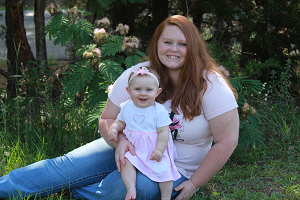Alabama
Alabama’s Tobacco Control Program Helps Housing Managers Implement Federal Rule and Provide Smoke-Free Housing to More than 8,600 Residents
More than 1 in 3 non-smokers who live in rental housing in the United States are exposed to secondhand smoke, which can travel from one unit to the next in the same building. Secondhand smoke is not safe at any level, and people who live in multiunit housing like apartments are more likely to be exposed to secondhand smoke than people living in single-family homes. Public housing, which is subsidized by the government, serves groups of people that are more vulnerable to the harms of secondhand smoke exposure, including children, older adults, and people with disabilities.1

Each year in the United States, an estimated 41,000 adults die from secondhand smoke exposure.2 Secondhand smoke exposure causes heart disease and stroke among nonsmoking adults. Among children, it causes ear infections, respiratory infections, more frequent and severe asthma, and sudden infant death syndrome.3 Because secondhand smoke is harmful, two employees at the Alabama Department of Public Health’s Tobacco Prevention and Control Branch—Knoxye Williams and Monica Moore—made this issue their priority.
Initial Outreach Builds a Bridge with Housing Officials
In 2016, Knoxye and Monica reached out to public housing authorities in the state that provide public housing to low-income residents to:
- Meet with their managers, residents, and staff to describe the benefits of smoke-free housing and how to adopt smoke-free policies.
- Distribute smoke-free housing toolkits at the state conference of the Alabama Association of Housing & Redevelopment Authorities (AAHRA).4
- Host a phone call that allowed housing authorities that had already adopted smoke-free policies to answer questions from those that hadn’t yet adopted such policies.
This outreach helped the tobacco prevention and control staff build important relationships with the state’s housing authorities.
Tobacco Prevention and Control Branch Efforts Help State Housing Managers
In December 2016, the US Department of Housing and Urban Development (HUD) announced a new federal rule requiring public housing to be smoke-free by July 31, 2018, to help protect residents from secondhand smoke. Knoxye and Monica knew this change would be a lot of work, but it would also be an opportunity to help housing authorities throughout Alabama adopt smoke-free policies. Only 11 of the state’s 149 housing authorities had put smoke-free policies in place in the past.
To help housing authorities meet the new federal rule’s requirements, Tobacco Prevention and Control Branch staff:
- Contacted the AAHRA to offer help to state housing authorities.
- Mailed information to all state housing authorities in March 2017 that included HUD’s smoke-free housing guide, quitline materials, sample smoke-free policies, and fact sheets.
- Accepted an invitation from AAHRA to speak at its April 2017 conference. About 125 attendees—two-thirds of all of the people at the conference—went to the Tobacco Prevention and Control Branch presentation.
Within 5 months of these efforts, eight more housing authorities—home to 8,628 residents—had adopted smoke-free policies. This change, which happened well before the July 31, 2018, deadline, brought the total number of public housing residents in Alabama who are protected by smoke-free policies to over 13,500.
The Centers for Disease Control and Prevention provided key funding for Alabama’s Tobacco Prevention and Control Branch, which Knoxye says is now accepted as an authority on how to adopt smoke-free policies. This funding helped housing authorities educate residents about health issues and get access to resources on how to quit smoking. Most importantly, the homes of people living in public housing in Alabama—including children, older adults, and people with disabilities—are now safer.
- Centers for Disease Control and Prevention. Secondhand Smoke: An Unequal Danger pdf icon[PDF—6.14 MB]. 2015.
- US Department of Health and Human Services. The Health Consequences of Smoking—50 Years of Progress: A Report of the Surgeon General. Atlanta, GA: US Dept of Health and Human Services, Centers for Disease Control and Prevention; 2014. Printed with corrections January 2014.
- Centers for Disease Control and Prevention. Secondhand Smoke. Accessed May 18, 2018.
- Alabama Association of Housing & Redevelopment Authoritiesexternal icon. Accessed February 26, 2018.



